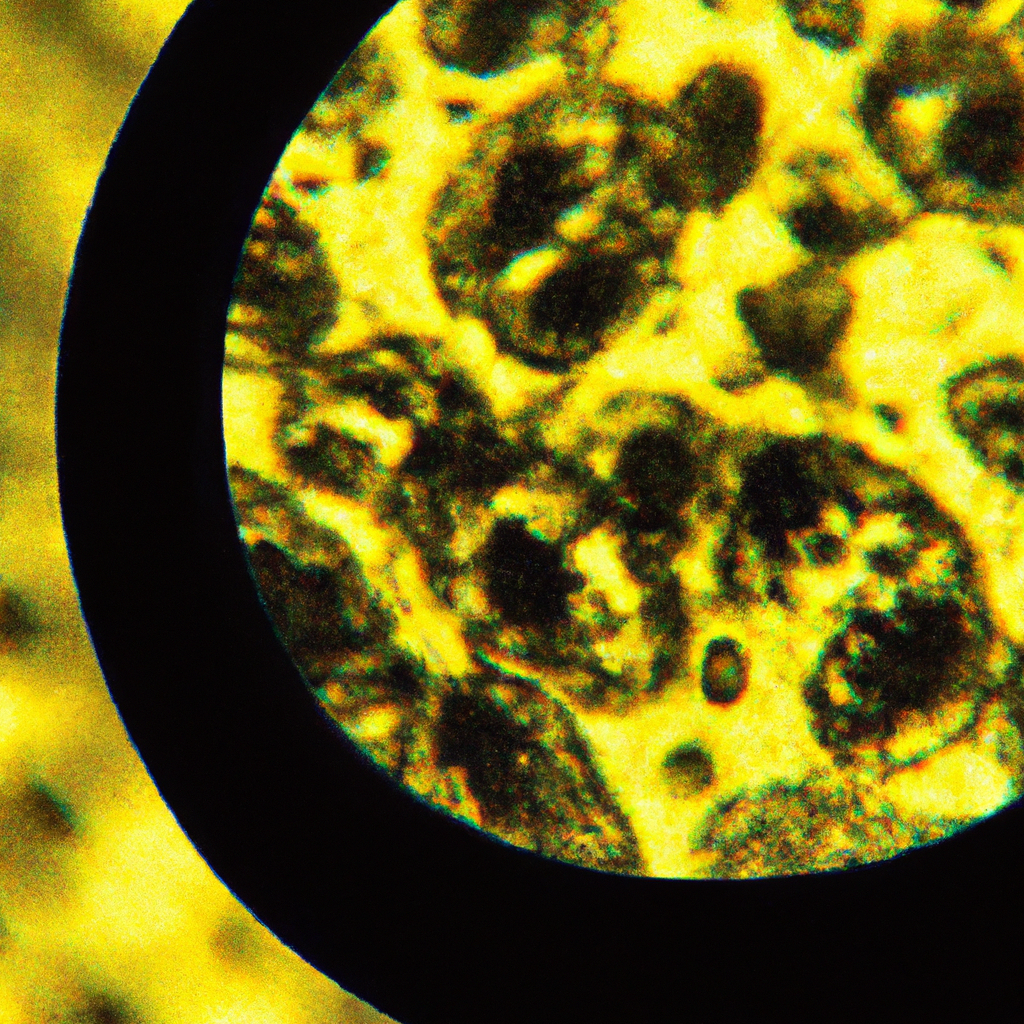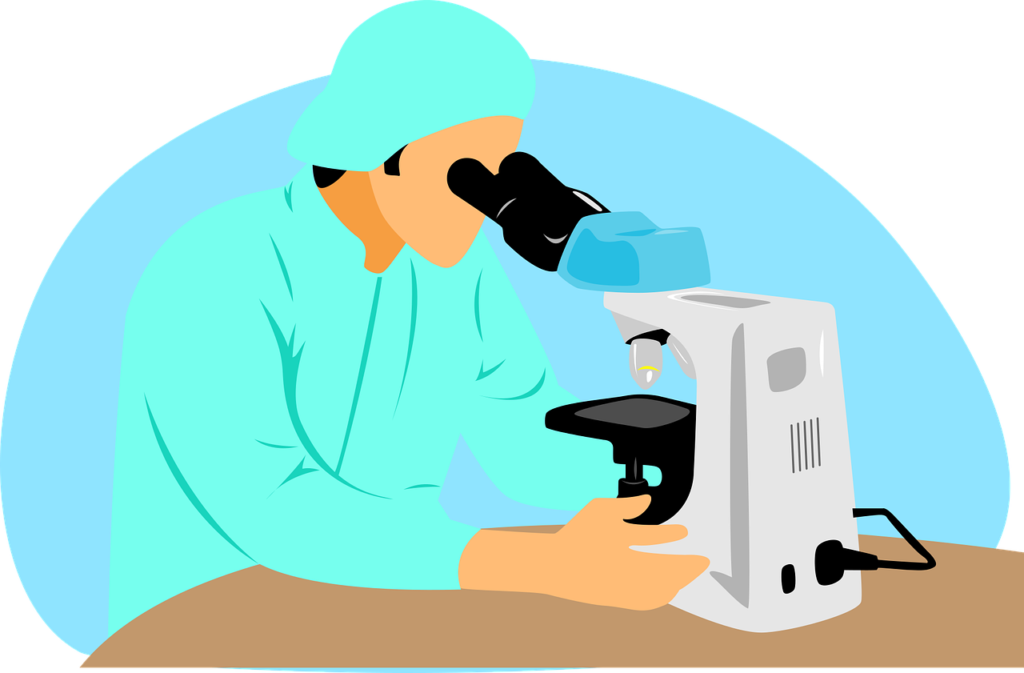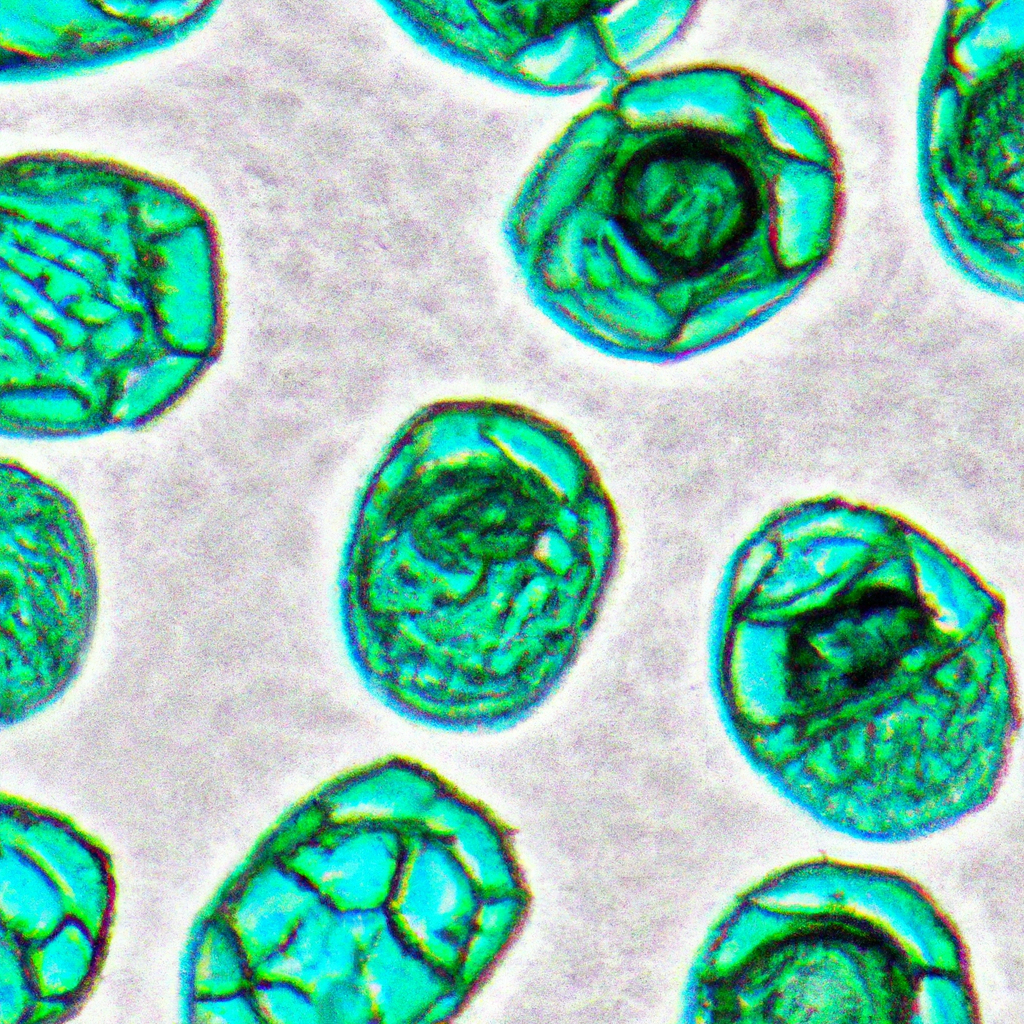In today’s technological age, where advancements are constantly being made, it is crucial to stay informed and educated about the latest tools and gadgets available. One such tool that has revolutionized the world of microscopy is the digital microscope. Wondering what a digital microscope is used for? This innovative device allows you to capture high-resolution images and videos of microscopic objects, allowing for detailed analysis and research across various fields, including biology, medicine, forensics, and even art. With its ability to magnify and document tiny details, a digital microscope opens up a whole new world of understanding and exploration.
What is a digital microscope?
A digital microscope is a modern scientific tool that brings the microscopic world to a whole new level. It combines the power of optics and digital imaging technology to provide high magnification and clear images of tiny objects. Unlike a traditional microscope, a digital microscope does not rely solely on eyepieces for observation. Instead, it uses a camera and a display screen to allow for easier viewing and sharing of images.
Definition
A digital microscope can be defined as a microscope that uses digital cameras and digital imaging technology to capture and display images of tiny objects. It eliminates the need for eyepieces and offers a more convenient way to examine specimens. The images produced by a digital microscope can be viewed directly on a computer screen or saved for further analysis and documentation.
Components
A digital microscope consists of several key components that work together to provide a seamless viewing and imaging experience. These components include a microscope body, an objective lens, an illumination source, a digital camera, and a display screen. The microscope body houses the objective lens, which collects and magnifies the light passing through the specimen. The illumination source provides the necessary lighting for clear imaging. The digital camera captures the magnified images, and the display screen allows for easy viewing and analysis.
Working Principle
The working principle of a digital microscope is based on the combination of optics and digital imaging technology. When an object is placed under the microscope, light from the illumination source passes through the objective lens and interacts with the specimen. The light is then captured by the digital camera, which converts it into digital signals. These signals are then processed and displayed on a screen, allowing for real-time observation and analysis. The high magnification power of the objective lens ensures that even the tiniest details of the specimen can be seen with clarity.
Advantages of a digital microscope
Digital microscopes offer numerous advantages over traditional microscopes. These advantages make them indispensable tools in various fields of science, research, education, industry, forensics, art, conservation, electronics, agriculture, and jewelry and gemology.
High magnification
One of the key advantages of a digital microscope is its ability to provide high magnification. With a traditional microscope, the maximum magnification is limited by the eyepiece lenses. However, a digital microscope can achieve much higher magnification levels, allowing for a detailed examination of even the smallest structures. This makes it ideal for observing intricate biological specimens, analyzing microstructures in materials, or inspecting tiny electronic components.
Clear and detailed images
Another noteworthy advantage of a digital microscope is the clarity and detail of the images it produces. The combination of high-quality optics and digital imaging technology ensures that every minute detail of the specimen is captured and displayed with exceptional clarity. This level of clarity is essential for accurate analysis and documentation, whether it’s in scientific research, medical diagnosis, or quality control inspection.
Easy image capture and sharing
With a digital microscope, capturing and sharing images has never been easier. The digital camera integrated into the microscope allows for quick and effortless image capture. Images can be saved directly to a computer or storage device, eliminating the need for manual sketching or photographing through an eyepiece. Furthermore, these digital images can be easily shared with colleagues, students, or clients through email, file-sharing platforms, or presentation software. This seamless sharing of images promotes collaboration and enhances communication in various fields.
Flexibility and versatility
Digital microscopes offer a high degree of flexibility and versatility, making them suitable for a wide range of applications. They can be used in various settings, from research labs and medical facilities to classrooms and industrial manufacturing plants. Moreover, digital microscopes can be easily connected to other devices, such as computers or projectors, allowing for seamless integration into existing systems. This versatility makes them adaptable to the specific needs and requirements of different applications and industries.
Real-time viewing
Unlike traditional microscopes that require direct observation through eyepieces, digital microscopes provide real-time viewing on a display screen. This feature allows multiple users to simultaneously view the specimen without the need for each person to take turns looking into the eyepiece. Real-time viewing also facilitates interactive discussions and collaborations, as viewers can easily point out specific features or areas of interest on the screen. This capability is particularly useful in educational settings or during team projects where simultaneous observation is crucial.

Applications of a digital microscope in science and research
The use of digital microscopes has revolutionized the field of science and research by providing new tools for observation, analysis, and documentation. These microscopes find numerous applications in various scientific disciplines, contributing to advancements in biology, medicine, materials science, and environmental research.
Biological research
In biological research, digital microscopes are extensively used to study various organisms, from microorganisms to complex tissues. These microscopes allow researchers to observe cellular structures, investigate cellular processes, and examine the interactions between different organisms. The high magnification and clarity of the images provided by digital microscopes enable detailed analysis and contribute to a better understanding of the complexities of life.
Medical diagnosis
Digital microscopes have become vital tools in medical diagnosis, aiding in the detection and identification of diseases and abnormalities. They are used in pathology labs to examine tissue samples for cancer or other diseases. They are also employed in hematology to analyze blood samples for abnormalities or infections. The digital imaging capabilities of these microscopes facilitate accurate diagnosis and enable efficient communication and collaboration among healthcare professionals.
Material analysis
Material analysis is another area where digital microscopes play a crucial role. These microscopes allow researchers and engineers to examine the microstructures of materials, such as metals, ceramics, polymers, and composites. By analyzing the microstructures, they can determine the material’s properties, identify defects or impurities, and improve the design and performance of various products. The high magnification and clear imaging capabilities of digital microscopes make them indispensable tools in material science and engineering.
Environmental research
Digital microscopes are also valuable tools in environmental research, particularly in the study of microorganisms and pollutants. They enable scientists to examine and identify microscopic organisms found in water, soil, or air samples. By analyzing these organisms, researchers can assess the health of ecosystems, monitor pollution levels, and study the impacts of human activities on the environment. The ability to capture and share images in real-time facilitates quick analysis and aids in the preservation and conservation of natural resources.
Applications of a digital microscope in education
Digital microscopes have transformed the way science and biology are taught in educational settings. These microscopes bring the microscopic world to life, making it easier for students to understand complex concepts and develop essential scientific skills.
Classroom demonstrations
Digital microscopes are excellent tools for classroom demonstrations. Teachers can use them to showcase microscopic structures, such as plant cells, animal tissues, or microorganisms, to the entire class. The images displayed on a large screen allow students to observe the specimen in detail and facilitate class discussions. These demonstrations spark curiosity and engage students, fostering a deeper understanding of scientific concepts.
Laboratory experiments
Digital microscopes are indispensable in laboratory experiments, where students can directly observe and analyze specimens. Whether it’s examining the anatomy of a leaf, investigating the structure of microorganisms, or conducting experiments on cells, these microscopes provide students with a hands-on learning experience. The ability to capture and save images enhances students’ ability to document their findings and enables them to refer back to the images for further analysis and reporting.
Online learning platforms
In the digital age, online learning platforms have become increasingly popular. Digital microscopes can be integrated into these platforms, allowing students to access and explore microscopic images remotely. This remote learning feature is especially beneficial for students who are unable to attend physical labs or those studying from distant locations. By accessing high-quality images and participating in virtual microscopy sessions, students can broaden their understanding and gain practical experience in their chosen field of study.
Research projects
Digital microscopes are valuable tools for students undertaking research projects. They enable students to delve into specific scientific questions and conduct independent investigations under the guidance of their teachers or mentors. These microscopes provide students with the necessary tools to observe and analyze their chosen samples, contributing to their scientific knowledge and research skills. The ability to capture and share images facilitates effective communication and allows students to present their findings to a wider audience.

Applications of a digital microscope in industry
The use of digital microscopes is widespread across various industries, where accurate observation, analysis, and quality control are paramount. These microscopes find applications in industries ranging from manufacturing and electronics to precision engineering and failure analysis.
Quality control and inspection
The quality control and inspection processes in manufacturing industries rely heavily on digital microscopes. These microscopes enable inspectors to examine products and components for defects, scratches, or imperfections that may affect quality or performance. The high magnification and clear imaging capabilities allow for detailed analysis, ensuring that products meet the required standards. Digital microscopes also aid in identifying any manufacturing issues, enabling prompt corrective actions and minimizing production errors.
Failure analysis
When components or products fail in industries, digital microscopes play a crucial role in understanding the root causes of the failures. These microscopes allow failure analysts to examine the failed components, analyze the microstructures, and identify any manufacturing or material defects. The ability to capture high-resolution images aids in documenting the failure modes and facilitates discussions among experts. This comprehensive analysis helps in developing strategies to prevent similar failures in the future and improves the overall reliability of products.
Product development
Digital microscopes are invaluable tools in product development, helping engineers and designers optimize their designs and enhance product performance. By analyzing the microstructures of materials and components, these microscopes provide insights into potential design improvements and identify any design flaws or weaknesses. Engineers can use the images captured by digital microscopes to evaluate different design iterations, ensuring that the final product meets the desired specifications and standards.
Precision manufacturing
Digital microscopes are extensively used in precision manufacturing industries, where the fabrication of intricate components requires meticulous attention to detail. These microscopes aid in the inspection and analysis of small and intricate features, ensuring that manufacturing processes are carried out accurately. The high magnification and clear imaging capabilities allow for precise measurements and assist in maintaining the desired tolerances. Digital microscopes contribute to the overall quality and reliability of precision-manufactured products.
Applications of a digital microscope in forensics
Digital microscopes have become invaluable tools in forensic science, aiding investigators in the analysis and examination of evidence. These microscopes provide valuable insights into crime scene investigation, fingerprint analysis, and document examination.
Crime scene investigation
In crime scene investigation, digital microscopes play a vital role in the analysis of trace evidence. These microscopes allow forensic scientists to examine minute particles, such as fibers, hair, or glass fragments, found at crime scenes. The high magnification and clear imaging capabilities enable the identification and characterization of these particles, providing crucial evidence for solving crimes. Digital microscopes also aid in the documentation of evidence, allowing for efficient communication and collaboration among forensic teams.
Fingerprint analysis
Digital microscopes are instrumental in the analysis and comparison of fingerprints. These microscopes provide detailed images of ridge patterns, sweat pores, and other unique features present in fingerprints. By capturing high-resolution images, forensic experts can examine fingerprints more accurately and efficiently. Digital imaging also facilitates the sharing of fingerprint data among law enforcement agencies, enabling faster identification and matching of suspects.
Document examination
Digital microscopes are essential tools in document examination, particularly in the analysis of forgeries and counterfeit documents. These microscopes allow experts to inspect individual characters, ink features, and paper fibers with high magnification and clarity. By capturing images, experts can compare questioned documents with genuine samples to identify discrepancies or alterations. Digital microscopes aid in preserving and documenting evidence, ensuring the accuracy and integrity of forensic investigations.

Applications of a digital microscope in art and conservation
Digital microscopes have found significant applications in the fields of art, archaeology, and conservation. These microscopes enable researchers and conservators to examine artworks and artifacts at a microscopic level, providing valuable insights into their composition, condition, and authenticity.
Art analysis and restoration
Digital microscopes are indispensable in the analysis and restoration of artworks. By examining pigments, brushstrokes, and surface textures at a microscopic level, art experts can gain a deeper understanding of the techniques used by artists. This knowledge aids in the authentication, attribution, and dating of artworks. Digital microscopes also enable conservators to analyze the condition of paintings, sculptures, or other art objects, helping them develop appropriate conservation and restoration strategies.
Microscopic examination of artifacts
Archaeologists and cultural heritage specialists benefit greatly from the use of digital microscopes for the microscopic examination of artifacts. These microscopes allow researchers to analyze the microscopic features of artifacts, such as pottery shards, metal fragments, or ancient textiles. This analysis provides insights into the manufacturing techniques, origins, and historical uses of these artifacts. Digital microscopes aid in the documentation and preservation of cultural heritage, ensuring their long-term conservation and accessibility.
Document preservation
In the preservation of historical documents, digital microscopes are essential tools. These microscopes allow conservators to examine fragile documents, such as ancient manuscripts or delicate parchments, without causing damage. By capturing high-resolution images of the documents, experts can analyze the ink, pigments, or writing techniques used. Digital microscopes aid in developing appropriate preservation and conservation strategies, ensuring that these important historical records are protected and accessible for future generations.
Applications of a digital microscope in electronics
The electronic industry heavily relies on digital microscopes for various applications, including quality control, failure analysis, product development, and circuit debugging. These microscopes enable engineers and technicians to analyze electronic components and circuits at a microscopic level, ensuring optimal performance, reliability, and functionality.
PCB inspection
Digital microscopes are widely used in the inspection of printed circuit boards (PCBs). These microscopes allow engineers to examine the solder joints, traces, and components on PCBs, ensuring that they are properly assembled and free from defects. The high magnification and clear imaging capabilities enable detailed analysis, aiding in the identification of potential manufacturing issues or design flaws. Digital microscopes facilitate efficient inspection processes, improving the overall quality and reliability of electronic products.
Solder joint analysis
The quality of solder joints is critical in electronics manufacturing. Digital microscopes play a vital role in the analysis and inspection of solder joints. These microscopes enable engineers to examine the solder joints at a microscopic level, ensuring that they are properly formed and exhibit the desired characteristics. By capturing high-resolution images, engineers can evaluate the quality of the solder joints, identify any defects or abnormalities, and implement necessary corrective measures. Digital microscopes contribute to the overall reliability and performance of electronic components and devices.
Component identification
Digital microscopes aid in the identification and analysis of electronic components. Whether it’s identifying tiny surface-mount devices (SMDs) or analyzing the structure of integrated circuits (ICs), these microscopes provide valuable insights into the composition, design, and performance of components. The high magnification and clear imaging capabilities enable engineers to examine the component markings, packaging, and internal features. This analysis ensures accurate component identification and aids in the selection of suitable components for various applications.
Circuit debugging
When troubleshooting electronic circuits, digital microscopes are indispensable tools. These microscopes allow engineers to visually inspect the circuit components, traces, and connections, aiding in the identification of any faults or abnormalities. By capturing high-resolution images, engineers can analyze the circuit’s layout, identify potential short circuits or open circuits, and verify proper component placement. Digital microscopes assist in the efficient debugging of electronic circuits, minimizing downtime and improving overall productivity.

Applications of a digital microscope in agriculture
Digital microscopes have found useful applications in the field of agriculture, aiding in plant analysis, disease detection, and soil analysis. These microscopes enable researchers and farmers to study the microscopic world of plants and soils, contributing to improved agricultural practices and crop yields.
Seed analysis
Digital microscopes are invaluable tools in seed analysis. These microscopes enable researchers and seed breeders to examine the structure and quality of seeds. By capturing high-resolution images, experts can assess the seed morphology, viability, and germination potential. The analysis of seeds under digital microscopes aids in the selection of superior seeds for planting, optimizing crop yields, and ensuring high-quality produce.
Plant disease detection
Digital microscopes play a crucial role in the detection and diagnosis of plant diseases. By examining plant tissues and fungal spores at a microscopic level, researchers and farmers can identify the presence of pathogens or diseases affecting crops. The high magnification and clear imaging capabilities aid in the accurate identification of specific pathogens and the assessment of their impact on plants. Digital microscopes facilitate timely disease detection, allowing for prompt intervention and effective pest management strategies.
Soil analysis
The study of soils is essential in agriculture, as soil conditions directly affect crop growth and productivity. Digital microscopes enable researchers to analyze soil samples at a microscopic level, examining the composition, structure, and fertility of soils. By capturing high-resolution images, experts can assess important soil parameters, such as particle size distribution, organic matter content, and soil microorganisms. This analysis helps in determining suitable soil management practices, optimizing fertilizer application, and ensuring sustainable agricultural practices.
Applications of a digital microscope in jewelry and gemology
Digital microscopes have become indispensable tools in the jewelry and gemological industries. These microscopes enable gemologists, jewelers, and diamond cutters to examine gemstones and jewelry with exceptional precision and detail.
Gemstone inspection
Digital microscopes are extensively used in the inspection and grading of gemstones. These microscopes enable gemologists to observe the internal and external characteristics of gemstones, such as clarity, color, and cut, at a microscopic level. The high magnification and clear imaging capabilities allow for accurate assessment and grading of gemstones according to industry standards. Digital microscopes aid in identifying gemstone treatments, detecting any flaws or enhancements, and ensuring the quality and authenticity of gemstones.
Jewelry design and manufacturing
Digital microscopes find applications in the design and manufacturing processes of jewelry. These microscopes enable jewelry designers and manufacturers to examine intricate details, such as engravings, settings, and gemstone placements, at a microscopic level. By capturing high-resolution images, designers can assess the aesthetics and functionality of jewelry designs, ensuring their feasibility and marketability. Digital microscopes aid in the precise fabrication of jewelry and facilitate quality control during the production process.
Diamond cutting and grading
Digital microscopes are invaluable tools in the diamond cutting and grading industries. These microscopes enable diamond cutters and gemologists to analyze diamonds at a microscopic level, assessing their cut, clarity, color, and carat weight. The high magnification and clear imaging capabilities aid in the precise shaping and cutting of diamonds, enhancing their brilliance and overall appearance. Digital microscopes also assist in the accurate grading and certification of diamonds, ensuring their value and integrity in the market.
In conclusion, the applications of a digital microscope are vast and diverse, catering to a wide range of scientific, educational, industrial, forensic, artistic, and agricultural needs. From observing microscopic organisms in biological research to inspecting intricate components in electronics, digital microscopes provide valuable insights and enhance our understanding of the microscopic world. Their high magnification, clear imaging capabilities, easy image capture and sharing, along with their flexibility and real-time viewing features, make them indispensable tools in various fields.





